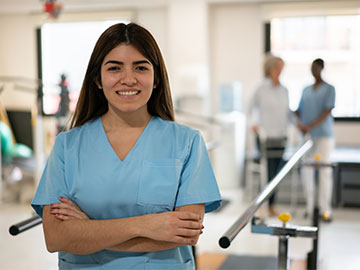Investigating the Varied Techniques of Physiotherapeutic Rehabilitation for Enhanced Healing and Rehabilitation
Investigating the Varied Techniques of Physiotherapeutic Rehabilitation for Enhanced Healing and Rehabilitation
Blog Article
Physical therapy is an important discipline that helps individuals recover from injuries, operations, and various health conditions. It involves a range of techniques designed to improve mobility, alleviate discomfort, and boost overall bodily capability. Physical therapists are qualified experts who evaluate each patient’s requirements and develop customized treatment strategies. These programs often consist of exercises, manual treatment, and education about body movements. By using these diverse approaches, physical can significantly enhance a patient’s standard of life.
One frequent method used in physiotherapy is rehabilitative activity. This involves targeted movements and activities that help strengthen muscle strength, enhance range of motion, and boost endurance. For instance, a client recovering from leg operation may engage in workouts that concentrate on restoring strength in the leg muscles. These activities are carefully chosen based on the individual’s status and objectives. By incrementally boosting the difficulty and complexity of the activities, physical practitioners can assist patients recover their power and mobility over a period.
Another crucial method is manual therapy, which comprises hands-on methods to manipulate the human body soft muscles and joints. This can entail flexibility exercises, mobilization, and manipulation. Manual therapy seeks to relieve discomfort, reduce swelling, and enhance blood flow. For instance, a practitioner may use light pressure to relieve stress in tight muscles or to assist a articulation move more smoothly. This technique is often integrated with other treatments to improve recovery and encourage recovery. Clients often find manual treatment to be a relaxing and beneficial way to manage their discomfort.
In addition to exercises and hands-on treatment, instruction plays a crucial part in physical. Therapists instruct patients about their issues and how to handle them efficiently. This may entail guidance on proper alignment, body movements, and techniques to prevent future injuries. For instance, a therapist great site might demonstrate a patient how to lift weighty objects safely to prevent straining their spine. By empowering clients with knowledge, physical practitioners help them assume an active part in their recovery and promote long-term health and fitness.
Finally, technology is increasingly being incorporated into physiotherapy methods. Devices such as sonography, electrical stimulation, and immersive reality can improve traditional therapy approaches. These technologies can assist reduce pain, encourage healing, and offer engaging ways for clients to participate in their rehabilitation. For example, virtual environments can create engaging environments for clients to rehearse movements in a safe plus secure environment. As advancements continues to evolve, it provides exciting possibilities for enhancing recovery outcomes in physical.
In summary, physical includes a range of techniques that work together to support rehabilitation and rehabilitation. Through rehabilitative activities, manual treatment, client education, and the application of technology, physiotherapy therapists provide holistic treatment tailored to each patient’s requirements. This holistic method not only assists patients regain their bodily capabilities but also empowers them to sustain their health in the long future. As an increasing number of people recognize the advantages of physiotherapy, it continues to play a vital role in the pathway toward enhanced health and fitness.